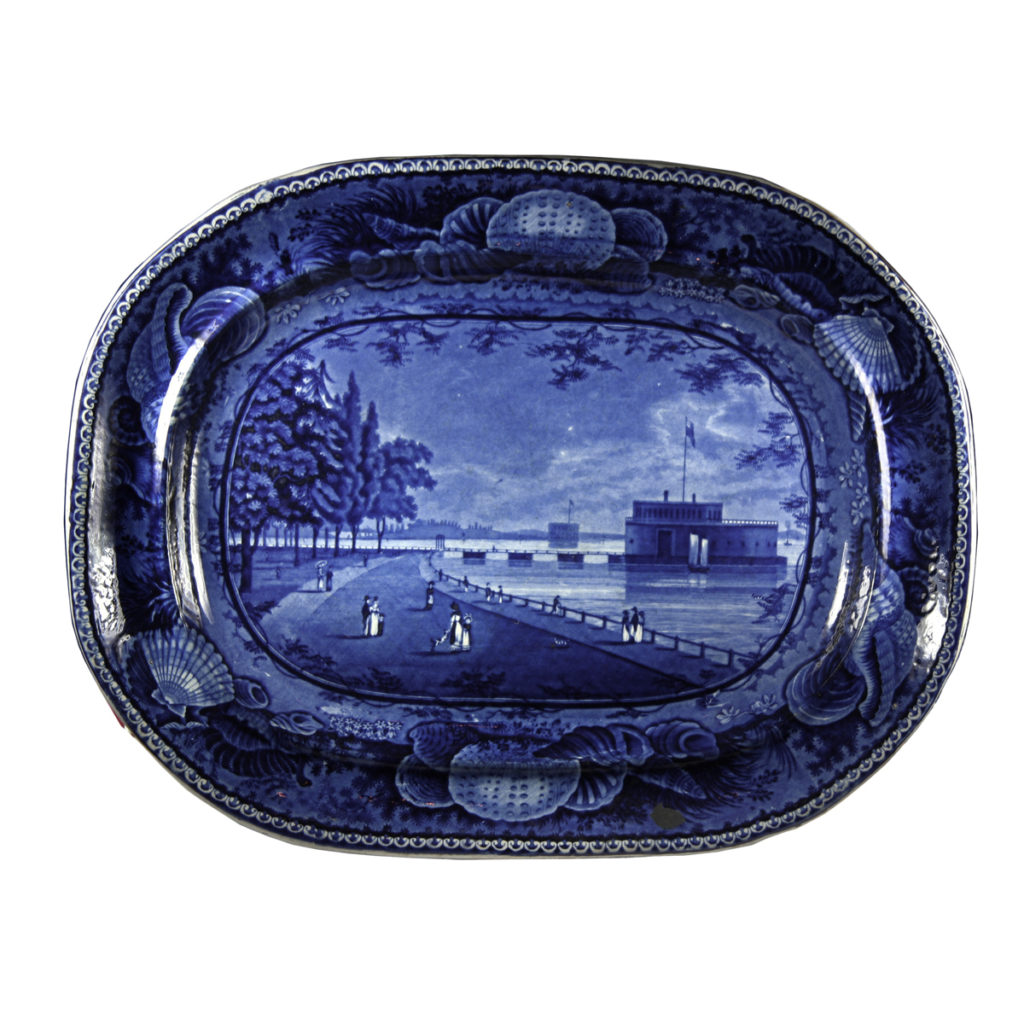


(image: Enoch Wood & Sons Castle Garden Battery, New York (18.75”x 14.75”) 1825)
More than a pretty colour: researching ‘American’ transfer-printed earthenwares; an adventure story
‘American’ transfer-printed earthenwares were made in early 19th century Staffordshire, exclusively for export to the emerging American republic. They were – still are – prized for their illustrations depicting real people and places at a particular historical moment, and for their beautiful deep blue surfaces. Developments in printing techniques and improvements in refining cobalt contributed significantly to their sumptuous appearance. By the end of the century they had become the focus of a collecting cult.
In recent years the narrative potential of domestic tableware has been recognised and exploited by contemporary practitioners. Artist/ceramist Paul Scott introduced me to American transferwares. He was embarking on a period of travel in the USA that would culminate in new works and a series of exhibitions. He intended to visit some of the sites depicted on these ceramics. We agreed that I would write in response to his activities. So I did, but I didn’t stop there.
It was the beginning of a research adventure. American transferwares have many stories to tell: they are like windows on the past; more than one past, as I discovered, for although they celebrate the birth of a nation, some of their stories make uncomfortable reading today.
Dr Jo Dahn is an independent writer, researcher and curator, with a background in academia. She has published widely on Ceramics and is the author of new directions in ceramics; from spectacle to trace (Bloomsbury 2015). Jo lives in Aberystwyth.
A recent essay about American transfer-printed earthenware can be found here:
Have a question, make a comment, or just say hello!
© International Ceramics Festival 2025 all rights reserved.
